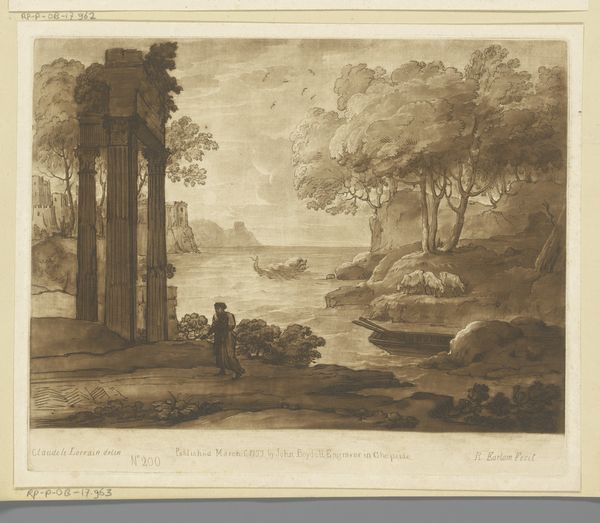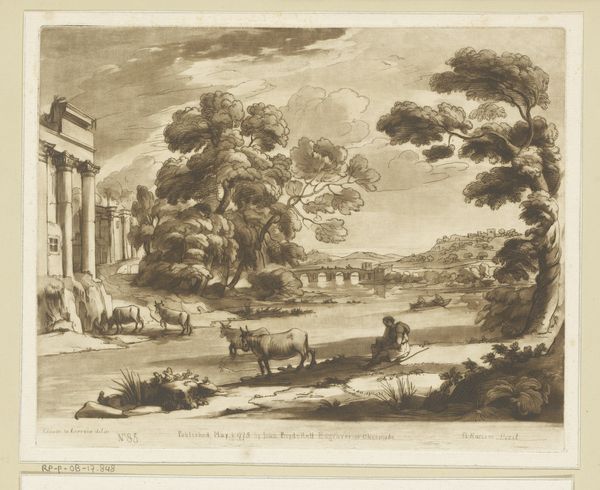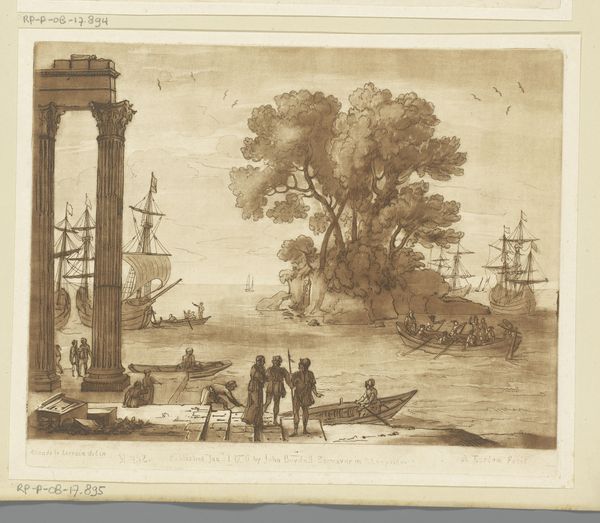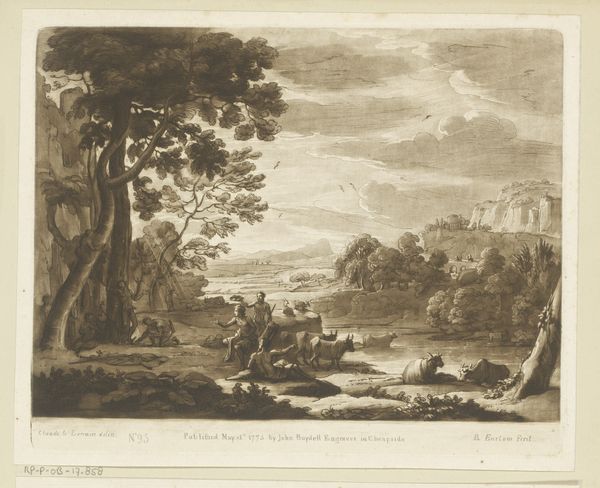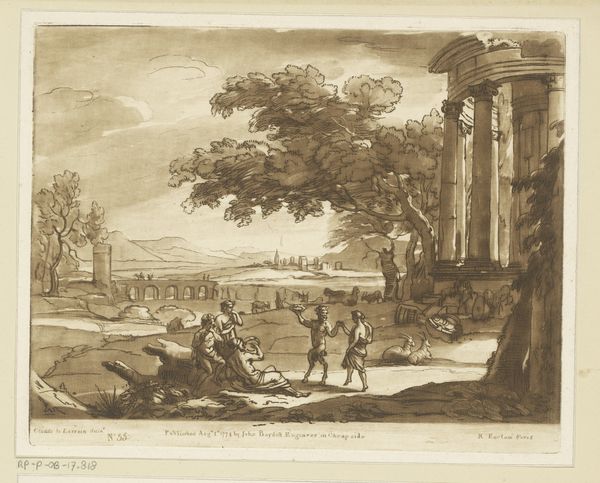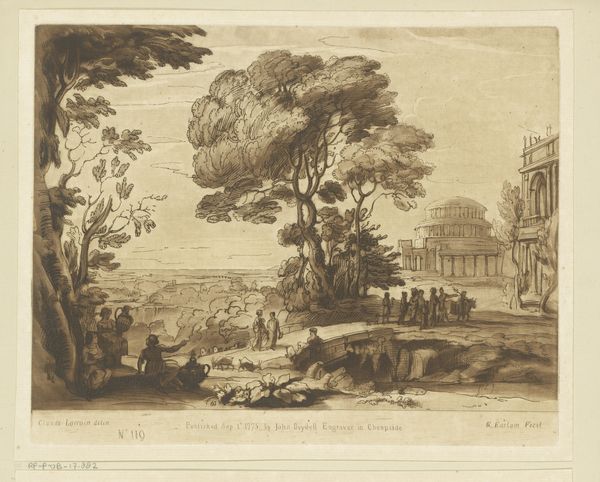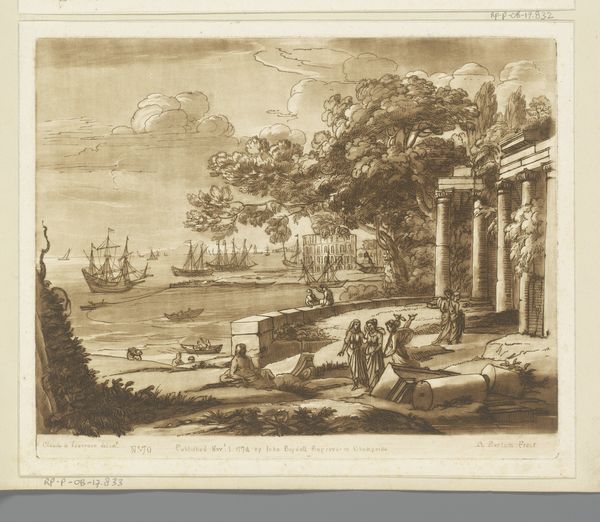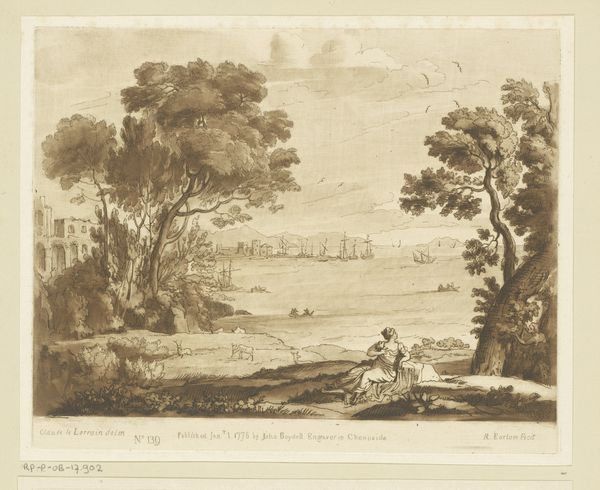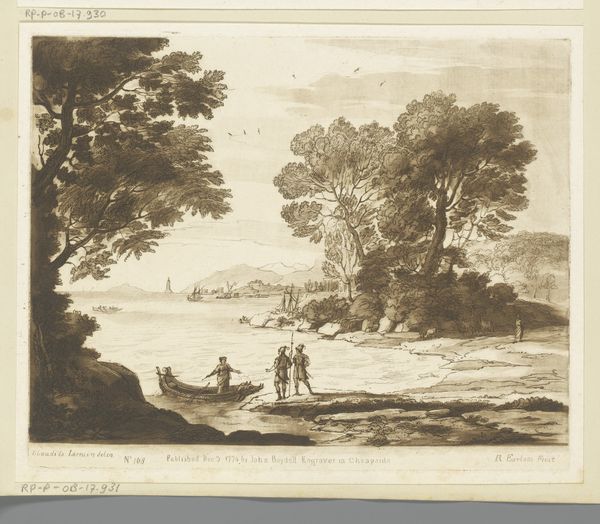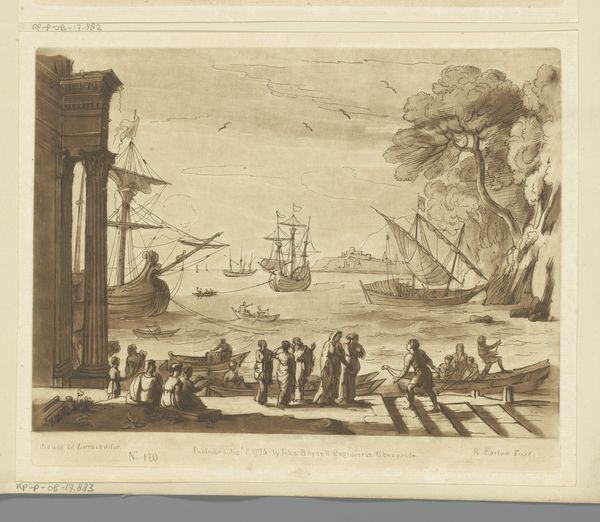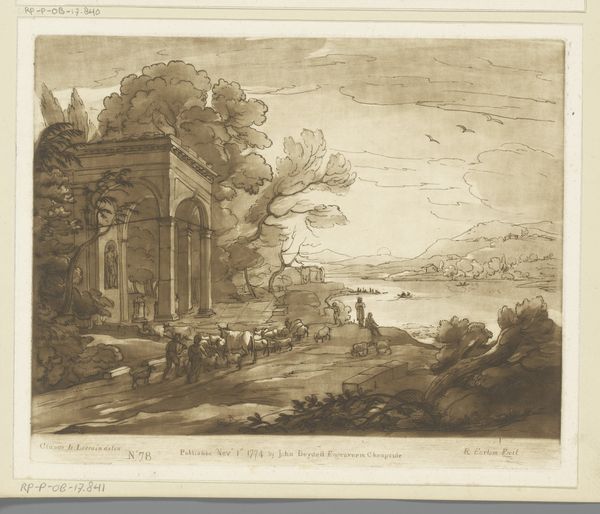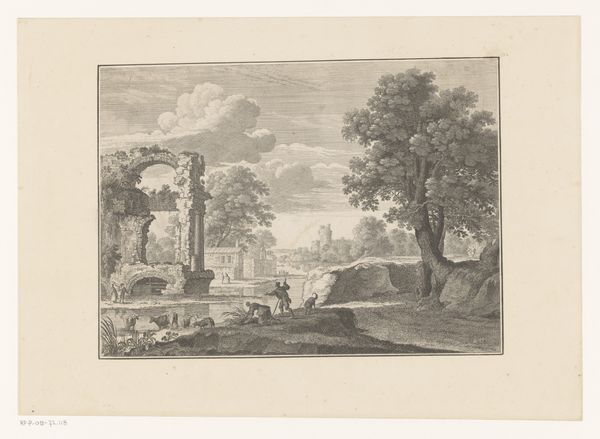
Dimensions: height 201 mm, width 257 mm
Copyright: Rijks Museum: Open Domain
Curator: We’re standing before Richard Earlom’s "Gezicht op een zeehaven met een tempel," or "View of a Seaport with a Temple," likely from 1774. It’s a print rendered in engraving. Editor: The scene immediately feels melancholic. The muted tones evoke a sense of antiquity, a wistful gaze into a distant past, all centered around trade and connection. Curator: I agree, and let’s delve into that. Earlom was known for his skill in reproducing drawings, often by Claude Lorrain. Consider this print within the context of the Grand Tour, a privilege afforded to wealthy Europeans who wished to encounter classic antiquity and Renaissance art. Prints such as these were vital for broadening horizons to a greater public. Editor: Yes, the Temple is prominent; but for me, there's such weight and drama carried by the dark pillars set against those detailed sailing ships, like icons of movement against this temple that’s itself iconic, symbolic of something older, perhaps immutable. Curator: Certainly. The juxtaposition of a classical structure with the bustling port is deliberate. We are asked to contemplate shifting power structures, between the enduring image of a fallen empire, against contemporary naval trade. Notice, for instance, the people busily embarking cargo onto the ships. These people would not have enjoyed the luxury of Grand Tours. Theirs would have been lives in service to this new global trade, at whose foundation the institution of chattel slavery flourished. Editor: Those working figures – stooped with burden - absolutely ground this airy idealized vision to earth. And you are so right - in its own way the temple becomes less important, its cultural weight eclipsed by this burgeoning, brutal trade power that is taking its place. Curator: Indeed, the seemingly timeless elegance clashes with a complex social and economic reality. What at first appears as an elegant scene now asks urgent questions. Editor: So even through idealized landscapes, potent reminders surface. It's about understanding the visual language, tracing its cultural inheritance, seeing not just beauty, but the coded realities underneath. Thank you! Curator: And thank you! For revealing its profound contradictions.
Comments
No comments
Be the first to comment and join the conversation on the ultimate creative platform.
